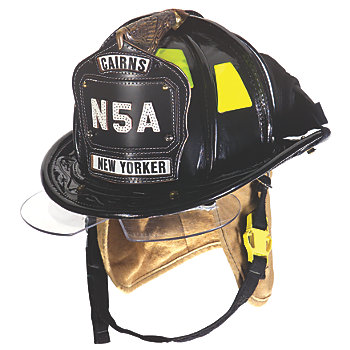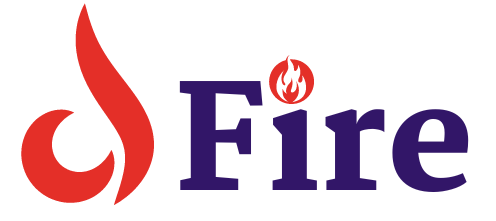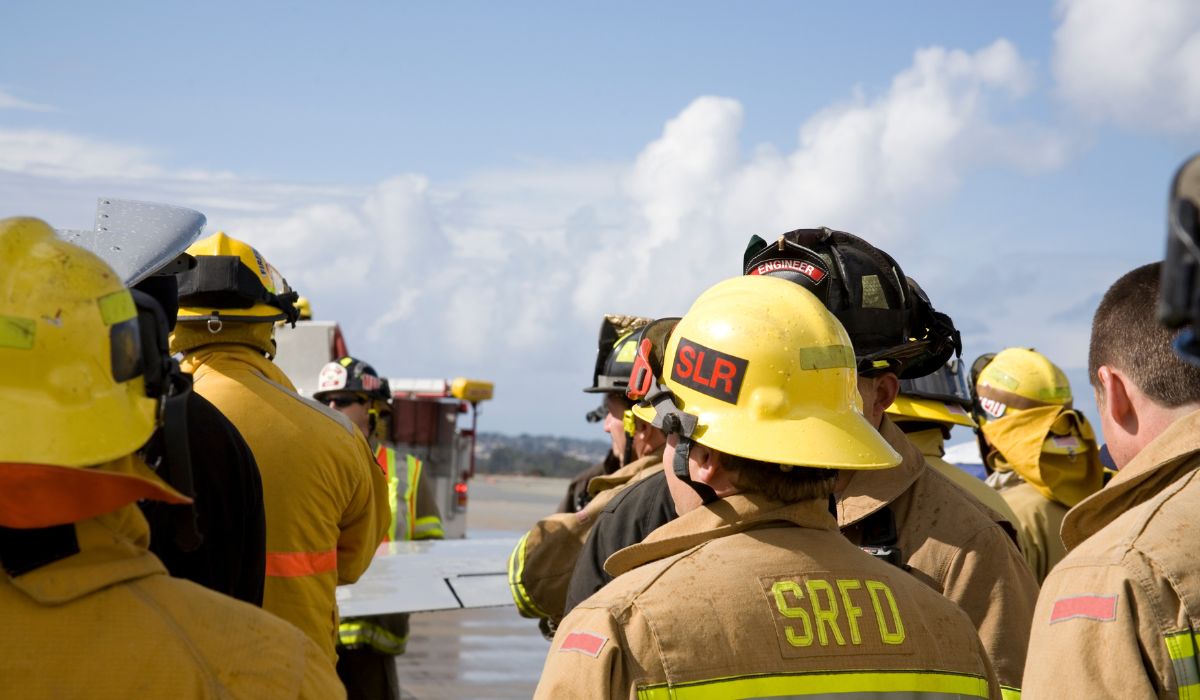A fire fighter helmet is designed to protect the wearer from heat, falling debris, and impact at fire scenes. These helmets are a critical component of a firefighter’s personal protective equipment.
Fire fighter helmets, recognizable by their distinct design and durability, are crucial for safety during hazardous fire-fighting operations. Crafted from heat-resistant materials, such as fiberglass or thermoplastics, these helmets safeguard the head from intense temperatures and unforeseen impacts. They often include a visor or face shield to protect against smoke and flying particles.
Furthermore, helmets come with a chinstrap for secure fitting and may integrate communication devices to maintain team coordination. Their bright colors and reflective strips ensure visibility in smoke-filled environments, aiding in the rapid location of firefighters by their colleagues. Consistently updated to meet rigorous safety standards, firefighter helmets embody a blend of tradition and advanced technology to provide maximum protection and functionality for heroes battling the blaze.
The Evolution Of Fire Fighter Helmets
The journey of firefighter helmets is a tale of innovation. Firefighters depend on their helmets to protect them from heat, falling objects, and other dangers. Throughout history, these helmets have undergone significant changes to offer better protection and functionality. Let’s dive into how they have evolved from their humble beginnings.
From Leather To Modern Materials
Leather helmets were once the norm for firefighters. Crafted by hand, these were durable but gave limited protection. Advancements led to helmets made from modern materials like fiberglass, thermoplastic, and Kevlar. These materials withstand high temperatures and impacts more effectively. Bulleted points shed light on the material transition:
- Hand-crafted leather: popular in the 1800s
- Fiberglass: introduced mid-20th century for better durability
- Thermoplastics and Kevlar: current standards for top safety
Technological Advances In Helmet Design
Beyond the material upgrades, technology reshaped helmet designs. Early helmets lacked features that are standard today. Now, design advances focus on comfort, communication, and integrated safety features. Consider this list of technological advancements:
| Year | Advancement |
|---|---|
| Early 1900s | Introduction of inner liners for comfort |
| 1970s | Integration of radios into helmets |
| 2000s | Development of thermal imaging cameras |
| Present | Smart helmets with heads-up displays |
These design changes demonstrate an ongoing commitment to improve firefighters’ protection and job performance. Modern helmets reflect decades of experiences, studies, and the courage of firefighters worldwide.

Credit: crewbossppe.com
Anatomy Of A Firefighter Helmet
Firefighter helmets are not just headgear. They are the result of advanced engineering. These helmets have evolved to become a fire warrior’s shield. They blend function with durability to protect brave souls. Let’s dive into the key components that make up the modern firefighter helmet.
Shell Materials And Construction
The outer shell of a firefighter helmet is its first line of defense. It’s what stands between a firefighter and the intense heat of a blaze. Materials range from fiberglass and thermoplastics to high-performance materials like Kevlar.
- Fiberglass: Widely used for its resistance to high temperatures and chemicals.
- Thermoplastics: Offers good impact protection and lighter weight.
- Kevlar: Boasts an incredible strength-to-weight ratio, with superior agility.
Protective Visors And Face Shields
Face shields and visors are vital for facial safety. They protect against heat, debris, and water. Different shield types offer varying degrees of visibility and protection.
| Type | Description | Visibility |
|---|---|---|
| External Visor | Attaches outside the helmet | High |
| Internal Visor | Stows inside the helmet | Adjustable |
| Goggles | Tight fit around eyes | Specific |
Interior Padding And Suspension Systems
Comfort and fit are just as crucial as durability. A helmet’s interior features padding and a suspension system. These absorb shocks and cushion the head. A good fit means better safety and less fatigue.
Here is what’s inside a helmet:
- Padding: Soft layers that cushion the head.
- Suspension Bands: They help distribute weight evenly.
- Ratchet System: Allows for quick size adjustments.
Key Features For Ultimate Protection
A firefighter helmet is crucial for safety on the job. It shields against many dangers. Here are the key features that offer ultimate protection.
Impact Resistance And Penetration Protection
Firefighter helmets must withstand heavy hits. They guard the head from falling debris and collisions. The helmets have a tough outer shell. This shell resists sharp objects. It prevents them from reaching the head. Look for helmets that meet official safety standards, such as those set by NIOSH or EN.
Thermal Barrier Performance
Intense heat is a given in fires. Firefighter helmets offer protection against this. They have a thermal barrier. It blocks heat from reaching the scalp. Helmets use materials like fiberglass and thermoplastics. These materials help withstand extreme temperatures.
- Heat resistance: Protects against heat-related damage.
- Insulating layers: Keep the head cool even with outside heat.
Visibility And Communication Enhancements
Good sight in smoke and darkness is key. Helmets have visors and goggles. They protect eyes while improving sight. Some also have integrated lighting. This lights up dark areas. Communication devices can be a part of helmets. They help firefighters stay connected.
| Feature | Benefit |
|---|---|
| Visors | Protect eyes and improve vision. |
| Integrated lighting | Enhance visibility in darkness. |
| Communication devices | Enable clear communication. |
Customization And Fit: Ensuring Maximum Comfort
Firefighter helmets are essential for safety in blazing infernos. They shield heads from heat and falling debris. Comfort is key for focus during emergencies. Customization and fit of helmets ensure maximum comfort. Ill-fitting helmets distract and endanger. Properly adjusted helmets offer protection and ease. This post dives into finding that perfect, snug helmet fit and style for firefighters.
Sizing For Safety
The right size helmet is a must. It can’t slide off or squeeze tight. Each brand might differ in size. Measure your head to match the brand’s size chart. Select a helmet that fits the head’s circumference without wobbling.
- Find the brand’s fitting guide
- Measure head circumference
- Match measurement to the right helmet size
Adjustable Features For The Perfect Fit
Fire helmets have knobs and ratchets for adjustment. They let firefighters tailor the fit to their heads. This ensures the helmet stays secure in action. Look for features that offer easy adjustment even with gloves on.
| Adjustable Part | Function |
|---|---|
| Ratchet system | Tightens or loosens the inner headband |
| Chin strap | Keeps the helmet anchored during vigorous movement |
Personalization And Identification
Custom decals and nameplates boost morale. They make fire helmets stand out. They also help in quick identification during chaos. Choose symbols, numbers, or letters that represent your crew.
- Select symbols or initials
- Decide on decal colors
- Place for easy visibility
Maintenance And Care For Longevity
Maintenance and Care for Longevity are crucial for any fire fighter’s helmet. These heroes’ helmets save lives. They must stay in top shape. Let’s dive into keeping them safe and durable through proper care.
Regular Cleaning Guidelines
Dirt and soot can damage a helmet. Regular cleaning is a must. Follow these steps for a clean helmet:
- Remove any components that are designed to be cleaned separately.
- Use mild soap and warm water to wipe down the helmet.
- Soft brushes can reach crevices and remove stubborn dirt.
- Rinse thoroughly to avoid soap residue.
- Dry with a soft, clean cloth or let it air dry.
Inspection And Replacement Schedules
A damaged helmet can fail. Inspect helmets regularly. Follow these points:
- Check for cracks, dents, or damage after every use.
- Look at the helmet’s interior for wear and tear.
- Review manufacturer’s guidelines for lifespan.
- Replace helmets at least every ten years or as recommended.
Storing Your Helmet Properly
Proper storage prevents damage. Here’s how to store your helmet:
| Do: | Don’t: |
|---|---|
| Keep in a cool, dry place. | Expose to direct sunlight for long periods. |
| Use a helmet rack or hook. | Drop or throw the helmet. |
| Ensure it’s dry before storage. | Store with wet or sweaty liners. |

Credit: aeromaxtoys.com
Certification Standards And Compliance
Certification Standards and Compliance ensure the safety of firefighters. High-quality helmets meet strict requirements. These standards protect those who save lives. Firefighter helmets must pass tests for impact, heat resistance, and durability. Certifications confirm helmet safety and reliability.
Nfpa And Osha Requirements
The National Fire Protection Association (NFPA) sets safety norms. Firefighter helmets must comply with NFPA 1971. This standard covers structural firefighting. It defines helmet performance requirements. The Occupational Safety and Health Administration (OSHA) also enforces regulations. Together, NFPA and OSHA ensure equipment meets safety benchmarks.
- Impact protection: Shields from falling debris.
- Heat resistance: Withstands extreme temperatures.
- Chin strap integrity: Keeps the helmet secure.
Understanding Certification Labels
Certification labels signal compliance with safety standards. They are found inside the helmet. Look for the NFPA 1971 label. It confirms helmet testing has occurred. SEI certification marks also show quality assurance. Inspecting labels helps ensure firefighter safety.
| Certification | What It Means |
|---|---|
| NFPA 1971 | Meets requirements for structural firefighting. |
| SEI | Product has been tested for safety. |
The Role Of Helmets In Overall Firefighter Safety
The Role of Helmets in Overall Firefighter Safety
Firefighter helmets are more than just headgear. They offer critical protection in intense situations. These helmets keep firefighters safe from falling debris, high temperatures, and even burns. Helmets are vital in a firefighter’s safety arsenal.
Integration With Other Ppe
Helmets work alongside other personal protective equipment (PPE). This includes masks, gloves, and boots. Together, they form a full safety suit. Helmets have special features for this:
- Face shields guard against heat and flying ash.
- Headlamps improve visibility in smoke-filled areas.
- Chin straps keep the helmet in place during movement.
This gear integration keeps firefighters protected from head to toe.
How Helmets Contribute To Situational Awareness
Helmets help firefighters stay alert. They do this in key ways:
- Vision: Clear visors maintain good eyesight.
- Hearing: Helmets designed not to muffle sounds allow firefighters to hear alarms and shouts.
- Communication: Built-in radios enable teamwork.
This gear ensures firefighters stay aware and react quickly.
Innovations And Future Trends In Helmet Technology
Firefighting is brave work that needs top gear. Helmets are key for safety. Today, tech and new materials are making helmets even better. Let’s explore the cutting-edge changes in helmet technology.
Smart Helmets: Incorporating Electronics
The future shines bright with smart helmets. These helmets are not just tough. They pack electronics to help firefighters. Here are some cool things they do:
- Head-up displays – They show important info right in the visor.
- Thermal imaging – Firefighters can see in the dark and through smoke.
- Sensors – They can tell if harmful gases are near.
- Communication tools – Talking with the team is easy, even in loud places.
Eco-friendly Materials And Sustainability
Future helmets will also love the Earth. Eco-friendly materials are coming. They are strong and good for the planet. Check out these materials:
| Material | Benefits |
|---|---|
| Bio-plastics | They come from plants, not oil. |
| Recycled fibers | Old things get a new life. |
| Natural resins | They don’t harm air or water. |
Helmets will be made to last long and reuse parts. This means less waste. Sustainability guides new designs.
Selecting The Right Helmet For Your Department
Firefighters face life-threatening situations daily. Adequate head protection is critical. The helmet is not only a symbol of bravery but also a crucial piece of safety gear. With the vast array of options available, choosing the right firefighter helmet can seem daunting. This guide highlights key considerations to ensure each firefighter is equipped with the optimal helmet for their department’s needs.
Evaluating Needs And Budget
Identify specific needs unique to your department before making a purchase. Consider the types of calls most frequently responded to, whether urban structure fires, wildland scenarios, or a mix of both. Consider the following points:
- Helmet type: traditional vs. modern
- Protection level: impact and heat resistance
- Comfort features: adjustable padding, weight
- Accessories compatibility: face shields, communication devices
Simultaneously, review your budget constraints. Opt for the best quality that fits the department’s financial plan. Utilizing grants or looking into payment plans can also be beneficial.
Comparing Brands And Models
Different brands and models cater to unique needs and preferences. Research top brands and read customer reviews to gain insight into performance and reliability. Look at the following aspects:
| Brand | Model | Key Features | Price Range |
|---|---|---|---|
| Brand A | Model X | Lightweight, high heat resistance | $$$$ |
| Brand B | Model Y | Impact protection, accessory slots | $$$ |
| Brand C | Model Z | Extended neck coverage | $$ |
Conduct a hands-on evaluation if possible. Many companies offer trial periods. Test different helmets under actual conditions to ensure suitability and comfort.

Credit: us.msasafety.com
Frequently Asked Questions
What Is A Firefighter’s Helmet Called?
A firefighter’s helmet is commonly known as a fire helmet. These helmets are designed to protect firefighters from heat, debris, and water while battling fires.
What Is The Difference Between Red And Black Firefighter Helmets?
Red firefighter helmets typically indicate a company officer, while black helmets denote a rank-and-file firefighter. The color distinction helps identify roles and hierarchy at emergency scenes.
Why Are Firemen Helmets So Big?
Firemen helmets are large to protect firefighters from heat, debris, and falling objects, while providing space for communication devices. The size ensures optimal safety and functionality during emergencies.
Do Firefighters Buy Their Own Helmet?
Firefighters typically do not buy their own helmets as they are standard issue from the fire department they serve with.
Conclusion
Wrapping up, selecting the right fire fighter helmet is critical for both safety and performance. A proper helmet shields against heat, impacts, and debris while ensuring comfort during intense rescues. Remember, quality gear not only protects heroes but empowers them to save lives efficiently.
Choose wisely, stay protected.

I’m Abdus Sobur, a highly skilled and professional Fire Safety Officer with a passion for safeguarding lives and property. Over the course of my career, I’ve conducted numerous successful fire safety audits, earning a reputation for excellence in ensuring public safety.
In addition to my role as a Fire Safety Officer, I’m also dedicated to raising awareness about the importance of fire safety. Through my blog, I share insights into the functions of different fire safety equipment, aiming to empower individuals with the knowledge they need to protect themselves and their communities.
I’m driven by a deep commitment to promoting fire safety awareness and preventing fire-related incidents.

